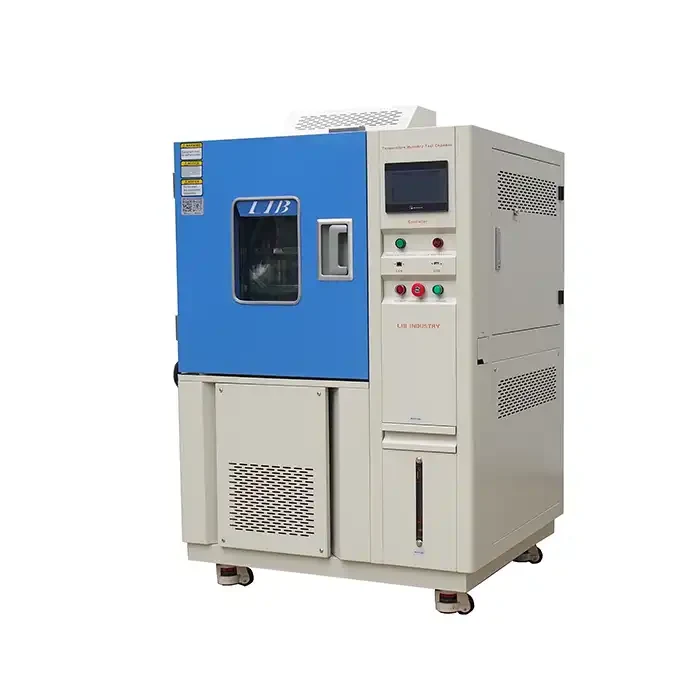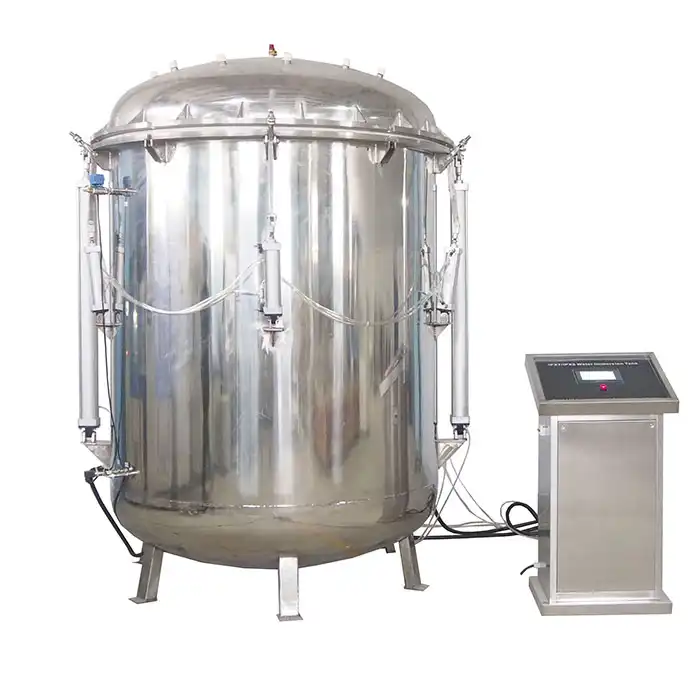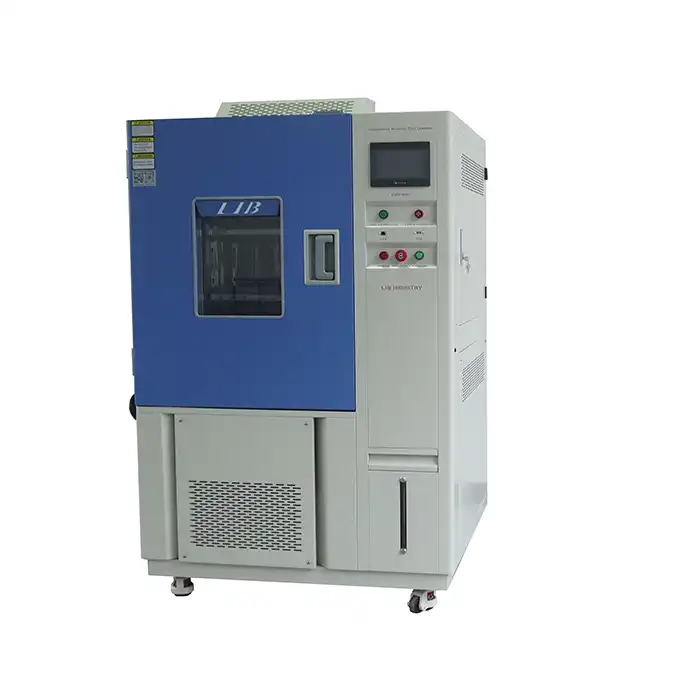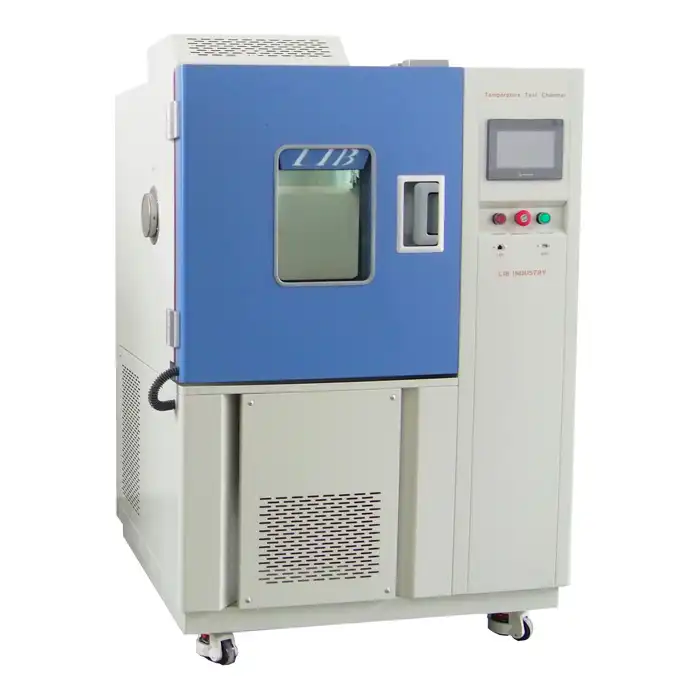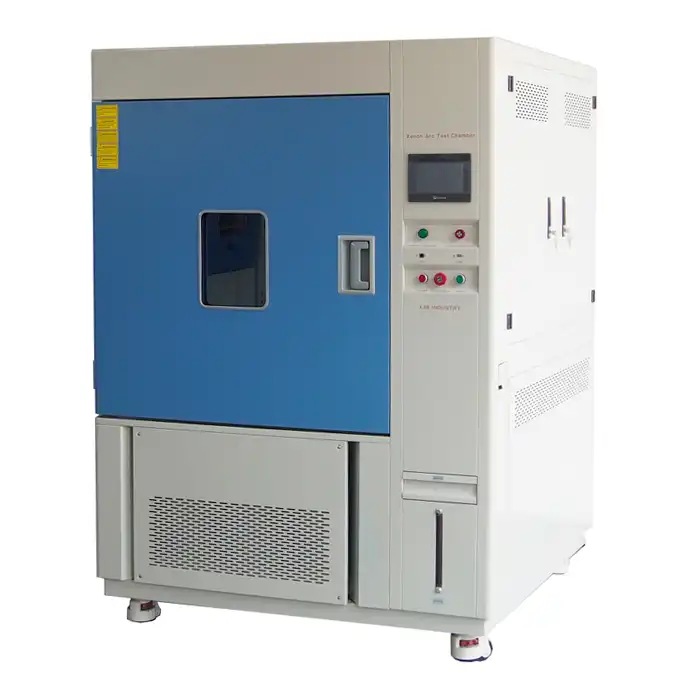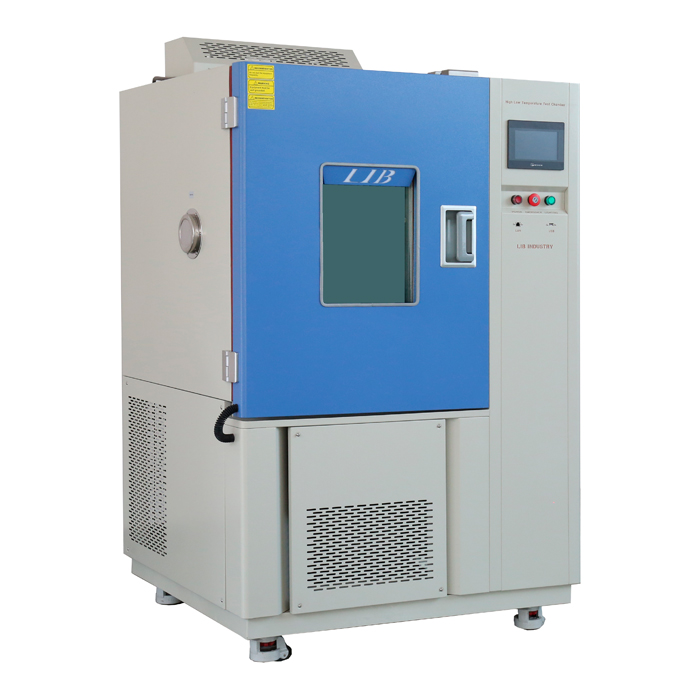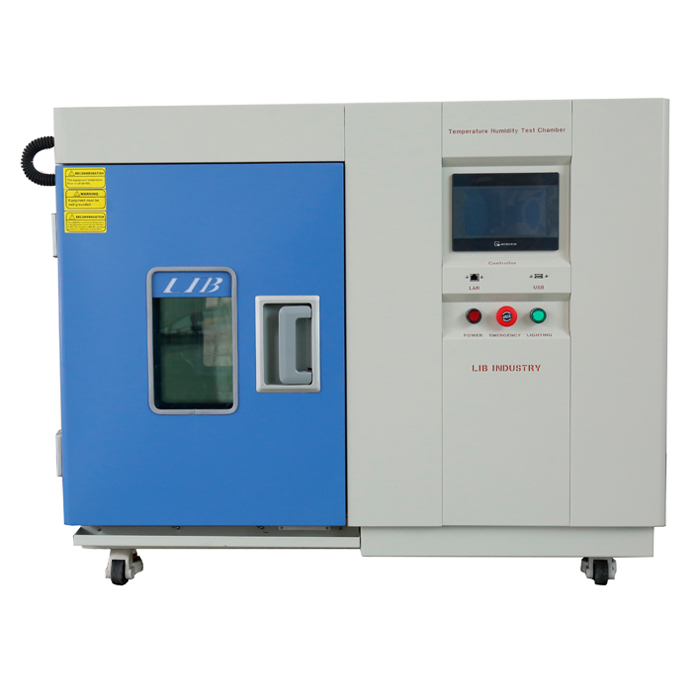What is accelerated weathering test?
An accelerated weathering test is a sophisticated method used to simulate and expedite the natural weathering process of materials. This technique employs specialized equipment, such as accelerated weathering testers or weathering chambers, to expose materials to controlled, intensified environmental conditions. These conditions typically include UV radiation, moisture, temperature fluctuations, and sometimes pollutants. The primary goal is to rapidly assess how materials will perform and degrade over time when exposed to outdoor elements. By compressing years of natural weathering into a matter of weeks or months, manufacturers and researchers can quickly evaluate the durability, color fastness, and overall performance of products ranging from paints and coatings to plastics and textiles. This crucial testing method enables industries to develop more resilient materials and predict product lifespans with greater accuracy.
Understanding the Mechanics of Accelerated Weathering Tests
The Science Behind Accelerated Weathering
Accelerated weathering tests are grounded in the principles of photochemistry and material science. These tests capitalize on the fact that most weathering damage is caused by a combination of light, heat, and moisture. By intensifying these factors in a controlled environment, researchers can trigger rapid degradation processes that mimic long-term exposure to natural elements.
The process typically involves cycles of UV exposure, condensation, and sometimes salt spray or other corrosive elements. UV radiation, particularly in the shorter wavelengths, is a primary catalyst for material degradation. It can break chemical bonds, leading to color fading, embrittlement, and loss of physical properties. Moisture, on the other hand, can cause swelling, leaching of additives, and hydrolysis reactions. Temperature fluctuations exacerbate these effects by causing thermal expansion and contraction, which can lead to mechanical stress and eventual failure.
Types of Accelerated Weathering Testers
There are several types of accelerated weathering testers available, each designed to simulate specific environmental conditions:
- Xenon Arc Chambers: These devices use xenon lamps to produce a spectrum of light that closely matches natural sunlight. They are particularly effective for testing materials sensitive to visible and UV light.
- QUV Weathering Testers: These employ fluorescent UV lamps to simulate the damaging effects of sunlight, particularly the UV portion of the spectrum. They are often used in conjunction with condensation cycles to replicate outdoor moisture exposure.
- Carbon Arc Chambers: Although less common now, these were among the first accelerated weathering devices. They use carbon arc lamps to produce UV light, but the spectrum is less representative of natural sunlight compared to xenon arc lamps.
- Metal Halide Lamps: These provide a good approximation of natural sunlight and are sometimes used in large-scale testing facilities.
Key Parameters in Accelerated Weathering Tests
Several critical parameters are controlled and monitored during accelerated weathering tests:
- Irradiance: The intensity of light, particularly in the UV spectrum, is carefully controlled to ensure consistent exposure across samples.
- Temperature: Both the ambient temperature and the black panel temperature (which represents the maximum temperature a sample might reach under sunlight) are regulated.
- Relative Humidity: This is crucial for simulating natural moisture conditions and is often cycled to represent day and night variations.
- Spray Cycles: Water spray or even salt spray may be introduced to simulate rain or marine environments.
- Test Duration: The length of exposure is calibrated based on the specific material and the intended simulation of real-world conditions.
Applications and Benefits of Accelerated Weathering Tests
Industries Utilizing Accelerated Weathering
Accelerated weathering tester find applications across a wide range of industries, each benefiting from the ability to predict long-term material performance:
- Automotive: Testing of exterior paints, coatings, and plastic components to ensure longevity under various climatic conditions.
- Construction: Evaluation of building materials, including roofing, siding, and window treatments, for durability and weather resistance.
- Textiles: Assessment of fabric color fastness, water repellency, and overall durability for outdoor apparel and furniture.
- Plastics: Testing of polymers used in outdoor applications, from playground equipment to agricultural films.
- Coatings and Paints: Evaluation of protective and decorative coatings for resistance to fading, chalking, and degradation.
- Solar Energy: Testing of photovoltaic panels and materials to ensure long-term efficiency and durability.
- Aerospace: Assessment of materials used in aircraft exteriors and satellite components.
Advantages of Accelerated Testing
The benefits of employing accelerated weathering tests are numerous and significant:
- Time Efficiency: Results that would take years to obtain through natural weathering can be achieved in weeks or months.
- Cost-Effectiveness: By identifying potential failures early in the development process, companies can save on costly recalls or product failures.
- Product Improvement: Rapid feedback allows for iterative improvements in material formulations and product designs.
- Quality Assurance: Manufacturers can confidently provide warranties and performance guarantees based on test results.
- Competitive Advantage: Companies can bring more durable products to market faster, gaining an edge over competitors.
- Regulatory Compliance: Many industries have standards that require weathering tests as part of certification processes.
- Environmental Impact Reduction: By developing longer-lasting products, companies can reduce waste and resource consumption.
Limitations and Considerations
While accelerated weathering tester are invaluable, it's important to understand their limitations:
- Correlation to Natural Weathering: Accelerated tests may not always perfectly correlate with real-world performance due to the complexity of natural environments.
- Overacceleration: Extremely high acceleration factors can lead to unrealistic degradation mechanisms that wouldn't occur in natural conditions.
- Material-Specific Responses: Different materials may respond differently to accelerated conditions compared to natural weathering.
- Test Selection: Choosing the right type of accelerated test for a specific material or application is crucial for obtaining relevant results.
- Interpretation of Results: Expertise is required to accurately interpret test data and translate it into meaningful predictions of real-world performance.
Implementing Accelerated Weathering Tests in Product Development
Integrating Tests into the Design Process
Incorporating accelerated weathering tests into the product development cycle is a strategic move that can significantly enhance the quality and reliability of the final product. Here's how companies can effectively integrate these tests:
- Early-Stage Testing: Conducting preliminary tests on prototypes or material samples can help identify potential issues before significant resources are invested in production.
- Iterative Testing: As product designs are refined, repeated testing can ensure that modifications haven't compromised weathering resistance.
- Benchmarking: Testing competitor products alongside new designs can provide valuable insights and set performance targets.
- Custom Test Protocols: Developing specific test protocols that simulate the exact conditions a product will face in its intended environment.
- Cross-Functional Collaboration: Involving R&D, quality assurance, and production teams in the testing process ensures that insights are effectively implemented.
Best Practices for Conducting Accelerated Weathering Tests
To maximize the value of accelerated weathering tests, consider the following best practices:
- Standardization: Adhere to recognized standards such as ASTM G154 or ISO 4892 to ensure consistency and comparability of results.
- Sample Preparation: Carefully prepare and document sample specifications to ensure reproducibility and relevance to the final product.
- Control Samples: Always include control samples and, when possible, naturally weathered samples for comparison.
- Regular Calibration: Maintain and calibrate weathering chambers regularly to ensure consistent and accurate test conditions.
- Data Management: Implement robust systems for collecting, storing, and analyzing test data to facilitate long-term trend analysis.
- Cyclic Testing: Incorporate realistic cycles that mimic day/night and seasonal variations for more accurate simulation.
- Multi-Factor Testing: Consider the combined effects of UV, moisture, temperature, and other relevant factors rather than testing them in isolation.
Interpreting and Applying Test Results
The true value of accelerated weathering tests lies in how effectively the results are interpreted and applied:
- Correlation Studies: Conduct correlation studies between accelerated and natural weathering results to refine predictive models.
- Performance Criteria: Establish clear pass/fail criteria based on the specific requirements of the product and its intended use.
- Failure Analysis: When failures occur, conduct thorough analyses to understand the mechanisms and inform future improvements.
- Continuous Improvement: Use test results to drive ongoing improvements in material selection, formulation, and product design.
- Risk Assessment: Incorporate weathering test results into broader risk assessment and quality management processes.
- Customer Communication: Leverage positive test results in marketing materials and customer communications to demonstrate product quality.
Conclusion
Accelerated weathering tests are an indispensable tool in modern product development and quality assurance. By simulating years of environmental exposure in a fraction of the time, these tests enable manufacturers to create more durable, reliable products across a wide range of industries. From automotive paints to building materials, the insights gained from weathering chambers and accelerated weathering testers drive innovation and set new standards for product performance. As technology advances, these testing methods continue to evolve, offering even more precise simulations and valuable data. For companies committed to producing high-quality, long-lasting products, investing in accelerated weathering testing is not just a quality control measure - it's a strategic imperative that can lead to significant competitive advantages in the global marketplace.
Contact Us
For more information on how accelerated weathering tests can benefit your product development process, contact LIB Industry. Our team of experts can provide tailored solutions and comprehensive testing services to ensure your products meet the highest standards of durability and performance. Reach out to us at info@libtestchamber.com to discuss your specific needs and discover how our advanced testing capabilities can help you stay ahead in today's competitive market.
References
1. ASTM International. (2016). ASTM G154-16: Standard Practice for Operating Fluorescent Ultraviolet (UV) Lamp Apparatus for Exposure of Nonmetallic Materials.
2. Wypych, G. (2018). Handbook of Material Weathering (6th ed.). ChemTec Publishing.
3. Grossman, G. W. (1977). Correlation of laboratory to natural weathering. Journal of Coatings Technology, 49(633), 45-54.
4. Pickett, J. E., & Gardner, M. M. (2005). Reproducibility of Florida weathering data. Polymer Degradation and Stability, 90(3), 418-430.
5. Köhl, M. (2001). Accelerated lifetime testing of polymeric materials. Macromolecular Symposia, 169(1), 213-220.
6. Andrady, A. L., Hamid, H. S., & Torikai, A. (2003). Effects of climate change and UV-B on materials. Photochemical & Photobiological Sciences, 2(1), 68-72.



